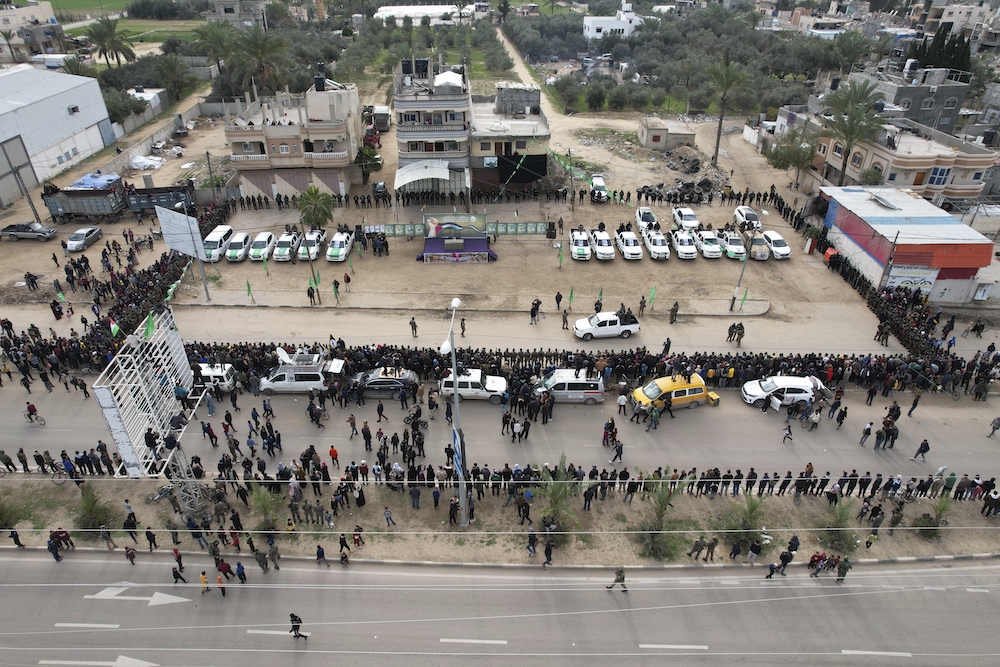High above the narrow streets and low-rise buildings of Mosul’s old city, beaming workers hoist an Iraqi flag into the sky atop one of the nation’s most famous symbols of resilience.
Perched precariously on scaffolding in high-vis jackets and hard hats, the workers celebrate a milestone in Iraq’s recovery from the traumatic destruction and bloodshed that once engulfed the city.
On Wednesday, the workers placed the last brick that marked the completed reconstruction of the 12th-century minaret of Al-Nuri Mosque. The landmark was destroyed by Daesh in June 2017 shortly before Iraqi forces drove the extremist group from the city.
Known as Al-Hadba, or “the hunchback,” the 45-meter-tall minaret, which famously leant to one side, dominated the Mosul skyline for centuries. The tower has been painstakingly rebuilt as part of a UNESCO project, matching the traditional stone and brick masonry and incorporating the famous lean.
“Today UNESCO celebrates a landmark achievement,” the UN cultural agency’s Iraq office said. “The completion of the shaft of the Al-Hadba Minaret marks a new milestone in the revival of the city, with and for the people of Mosul.
“UNESCO is grateful for the incredible teamwork that made this vision a reality. Together, we’ve created a powerful symbol of resilience, a true testament to international cooperation. Thank you to everyone involved in this journey.”
The restoration of the mosque is part of UNESCO’s Revive the Spirit of Mosul project, which includes the rebuilding of two churches and other historic sites. The UAE donated $50 million to the project and UNESCO said that the overall Al-Nuri Mosque complex restoration will be finished by the end of the year.
UNESCO Director-General Audrey Azoulay celebrated the completion of the minaret by posting “We did it!” on social media site X.
She thanked donors, national and local authorities in Iraq and the experts and professionals, “many of whom are Moslawis,” who worked to rebuild the minaret.
“Can’t wait to return to Mosul to celebrate the full completion of our work,” she said.
The Al-Nuri mosque was built in the second half of the 12th century by the Seljuk ruler Nur Al-Din.
After Daesh seized control of large parts of Iraq in 2014, the group’s leader, Abu Bakr Al-Baghdadi, declared the establishment of its so-called caliphate from inside the mosque.
Three years later, the extremists detonated explosives to destroy the mosque and minaret as Iraqi forces battled to expel them from the city. Thousands of civilians were killed in the fighting and much of Mosul was left in ruins.





























